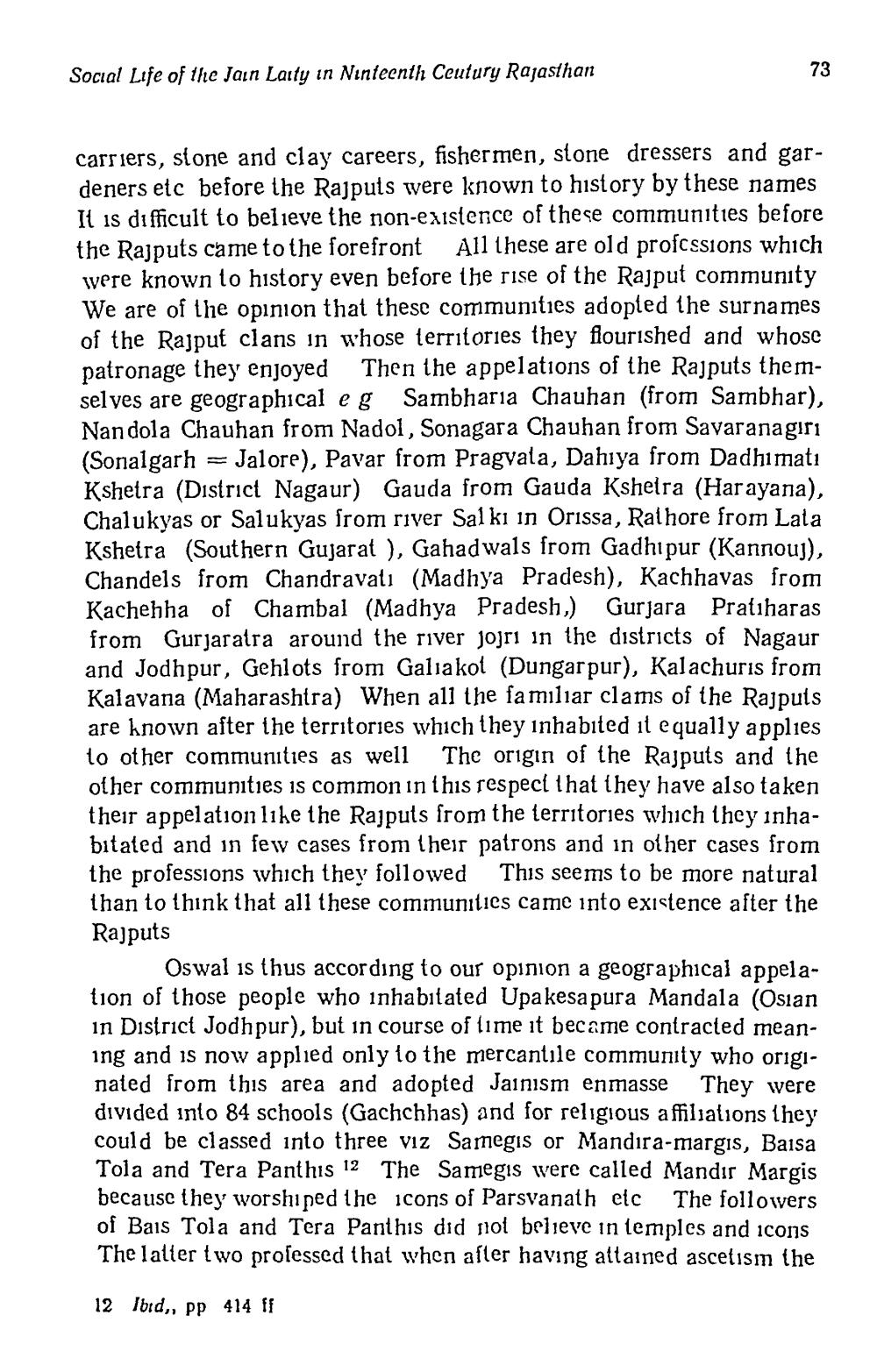________________
Social Life of the Jain Laity in Ninteenth Ceutury Rajasthan
carriers, stone and clay careers, fishermen, stone dressers and gardeners etc before the Rajputs were known to history by these names It is difficult to believe the non-existence of these communities before the Rajputs came to the forefront All these are old profcssions which were known to history even before the rise of the Rajput community We are of the opinion that these communities adopted the surnames of the Rajput clans in whose territories they flourished and whose patronage they enjoyed Then the appelations of the Rajputs themselyes are geographical eg Sambharia Chauhan (from Sambhar), Nandola Chauhan from Nadol, Sonagara Chauhan from Savaranagırı (Sonalgarh = Jalore), Pavar from Pragvata, Dahıya from Dadhimatı Kshetra (District Nagaur) Gauda from Gauda Kshetra (Harayana), Chalukyas or Salukyas from river Salki in Orissa, Rathore from Lala Kshetra (Southern Gujarat ), Gahadwals from Gadhipur (Kannouj), Chandels from Chandravatı (Madhya Pradesh), Kachhavas from Kachehha of Chambal (Madhya Pradesh,) Gurjara Pratıharas from Gurjaratra around the river jojri in the districts of Nagaur and Jodhpur, Gehlots from Galiakol (Dungarpur), Kalachuris from Kalavana (Maharashtra) When all the familiar clams of the Rajputs are known after the territories which they inhabited it equally applies to other communities as well The origin of the Rajputs and the other communities is common in this respect that they have also taken their appelation like the Rajputs from the territories which they inhabitated and in few cases from their patrons and in other cases from the professions which they followed This seems to be more natural than to think that all these communities came into existence after the Rajputs
Oswal is thus according to our opinion a geographical appelation of those people who inhabitated Upakesa pura Mandala (Osian in District Jodhpur), but in course of time it became contracted meaning and is now applied only to the mercantile community who originated from this area and adopted Jainism enmasse They were divided into 84 schools (Gachchhas) and for religious affiliations they could be classed into three viz Samegis or Mandıra-margis, Baisa Tola and Tera Panthis 12 The Samegis were called Mandır Margis
use they worshined the icons of Parsvanath etc The followers of Bais Tola and Tera Panthis did not believe in temples and icons The latter two prosessed that when after having attained ascetism the
12
Ibid., pp 414 ff




